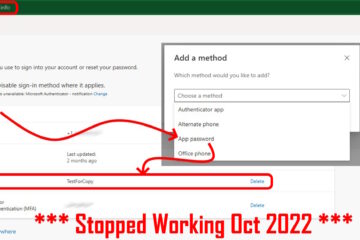In the world of cryptocurrencies, one platform that has been making waves and defying centralization critics is the Binance Smart Chain (BSC). With its innovative approach and commitment to decentralization, BSC has emerged as a formidable player in the blockchain space. This article explores how Binance Smart Chain, with the integration of online platforms, has tackled centralization concerns while promoting user participation and financial freedom. To effectively invest in crypto like Bitcoin, you may consider using a reliable trading platform like IMMEDIATE SMARTER.
The Rise of Binance Smart Chain
Binance Smart Chain, often referred to as BSC, was launched in 2020 by the renowned cryptocurrency exchange Binance. As a parallel blockchain to Binance Chain, BSC was created to address some of the limitations faced by its predecessor, particularly in terms of scalability and smart contract functionality. Since its inception, BSC has been steadily gaining popularity and attracting a large user base due to its fast transaction times and low fees. The platform has also been praised for its compatibility with the Ethereum Virtual Machine (EVM), which enables developers to port their Ethereum-based decentralized applications (dApps) seamlessly.
Decentralization at its Core
One of the primary criticisms faced by many blockchain platforms is their alleged centralization. However, Binance Smart Chain has been proactive in countering such claims. While it is true that BSC employs a consensus mechanism called Proof of Staked Authority (PoSA), which involves elected validators to confirm transactions, it still boasts a relatively high level of decentralization compared to some other popular blockchains. With a growing number of validators spread across the globe, BSC ensures that no single entity gains excessive control over the network.
Validators: Empowering the Community
To enhance decentralization further, Binance Smart Chain has taken significant strides in empowering its community of validators. Validators play a vital role in securing the network by validating transactions and creating new blocks. BSC follows a democratic process for selecting validators, allowing token holders to vote for their preferred candidates. This democratic governance model promotes transparency and gives the community a voice in determining the direction of the platform. By fostering a diverse pool of validators, BSC mitigates centralization risks and promotes a healthier ecosystem.
Bridging the Gap: Cross-Chain Interoperability
One of the standout features of Binance Smart Chain is its commitment to cross-chain interoperability. The platform supports the BEP-20 standard, which allows tokens to move seamlessly between BSC and other blockchains. This interoperability enables users to leverage the unique advantages of different blockchains while reducing dependency on a single network. By breaking down barriers and facilitating asset transfers across platforms, BSC promotes a more interconnected and decentralized crypto landscape.
Fostering Developer Adoption
Centralization critics often argue that some blockchain platforms are dominated by a handful of developers, limiting diversity and stifling innovation. Binance Smart Chain has actively sought to avoid such a scenario by fostering developer adoption and encouraging a vibrant dApp ecosystem. The platform’s compatibility with the Ethereum Virtual Machine has been a crucial factor in attracting developers who have already built applications on Ethereum. By offering a familiar development environment and the potential for lower fees, BSC has successfully enticed developers to explore its ecosystem and contribute to its growth.
Security and Trust: Chainlink Integration
Maintaining a high level of security and trust is paramount in the crypto space. Binance Smart Chain recognizes this and has integrated Chainlink, a decentralized oracle network, into its ecosystem. Chainlink provides reliable and tamper-proof data to BSC’s smart contracts, ensuring that applications built on the platform can access accurate information from external sources. This integration enhances the overall security of BSC’s dApps and instills confidence among users, developers, and stakeholders.
Safeguarding Against Centralization Risks: Binance Smart Chain’s Governance Upgrades
In its commitment to continuously enhance decentralization, Binance Smart Chain has implemented various governance upgrades. These upgrades aim to safeguard against potential centralization risks and ensure the platform’s long-term sustainability. One significant enhancement is the introduction of a dual-chain architecture, allowing BSC to operate in tandem with the Binance Chain. This dual-chain approach provides users with more choices and fosters a more decentralized ecosystem. Additionally, BSC has embraced on-chain governance, enabling token holders to propose and vote on protocol upgrades and changes. By actively involving the community in decision-making processes, Binance Smart Chain reinforces its decentralized nature and fosters greater trust among its stakeholders.
Conclusion
In conclusion, Binance Smart Chain has proven itself as a robust and decentralized blockchain platform that defies centralization critics. Through its innovative consensus mechanism, community-driven validator system, cross-chain interoperability, and focus on fostering a diverse developer ecosystem, BSC has successfully struck a balance between efficiency and decentralization. As the crypto space continues to evolve, Binance Smart Chain stands as a shining example of how blockchain technology can empower users, promote financial freedom, and challenge the notion of centralization in the digital age.




0 Comments